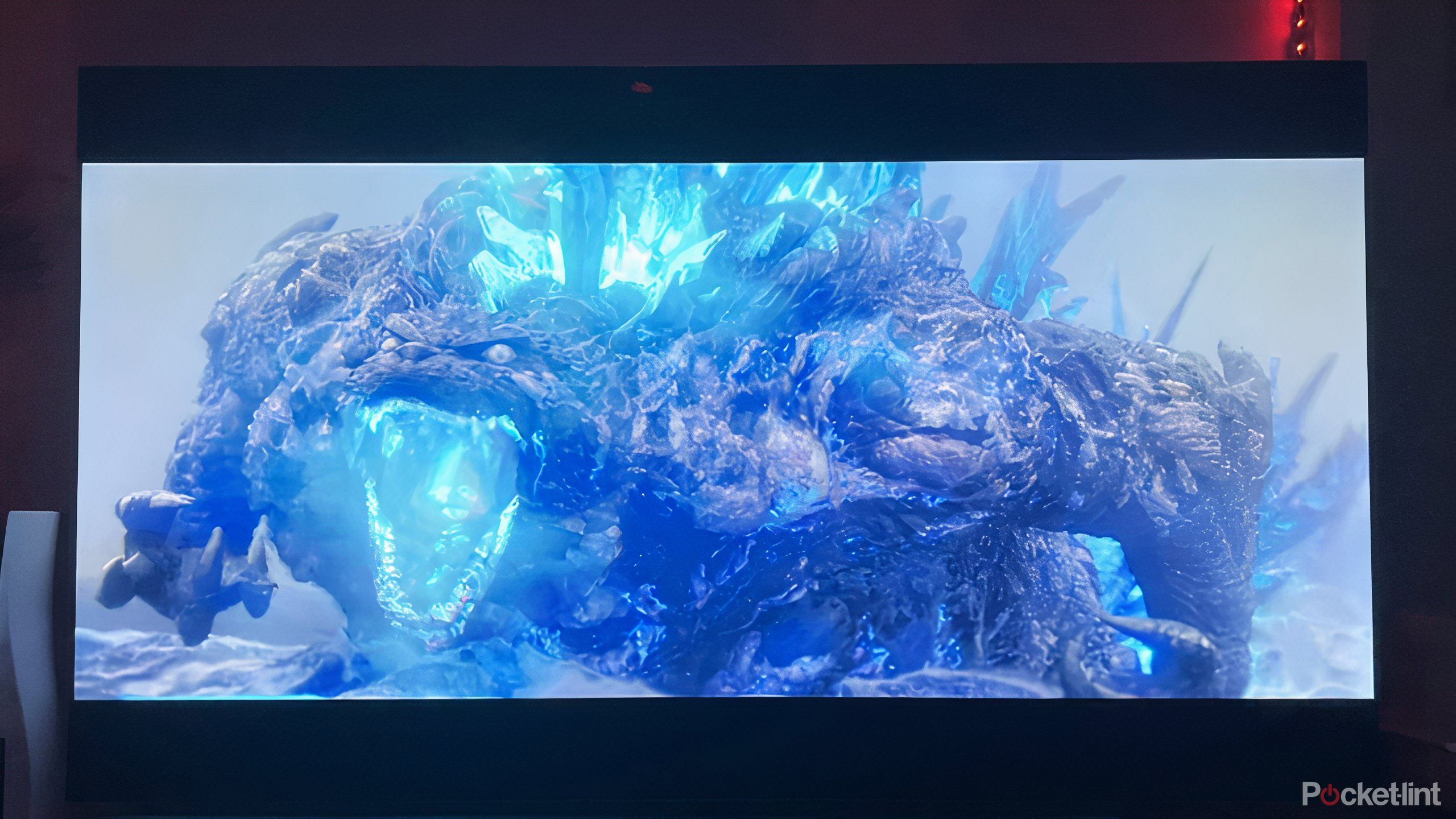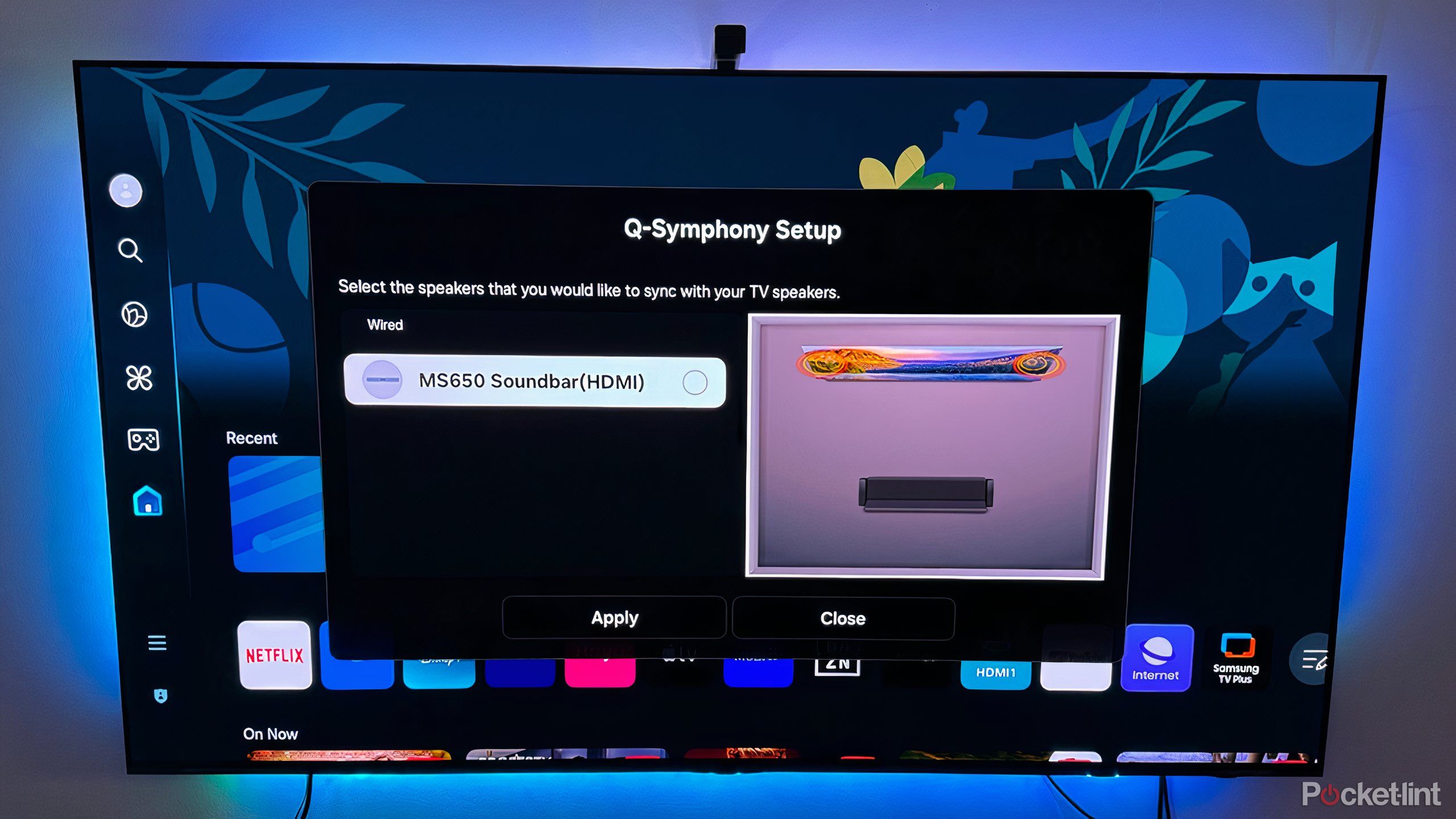Summary
- Smart TVs struggle to get loud and avoid distortion at high levels.
- Quiet dialogue and a lack of bass diminish entertainment.
- TV speakers can’t take advantage of surround sound formats and spatial audio features.
It’s no easy task putting quality speakers into an increasingly slender box that is designed for video and not audio. There have been plenty of improvements to sound quality in the latest and greatest smart TVs, but there is a clear limit to what is physically possible. Smart TVs are built with the slimmest of designs with the most powerful of processors, striving for perfect contrast while alongside incredible color depth and accuracy.
What that means is that sound takes a back seat. While top smart TVs come with a wide range of features to optimize audio, they require additional devices such as a soundbar to take advantage of them all. So, even if your TV speakers sound pretty good, you shouldn’t be using them exclusively. Here’s why.
Related
Your TV’s sound sucks. Here’s how to fix it
Enjoy immersive sound from your couch with proper settings and devices.
Smart TVs struggle to get loud
Distortion at high levels is a problem
There are those viewers out there who really want to experience sound, and want it turned up at high levels. Even the best smart TVs, however, have a limit to what they’re capable of. When you turn your smart TV to the highest volume, there are likely one of two outcomes. First, you start to experience distortion as you push the volume higher. Distortion takes place when sound changes; TV speakers can’t handle high volume, so some wavelengths may become clipped. The outcome is audio that sounds harsh, clouded, and distracting. Basically, your smart TV speakers can’t handle the volume so it collapses under the pressure.
The second outcome when you push your TV to its highest limits is that it simply isn’t that loud. To prevent distortion, some smart TVs simply cap the top volume limit. It doesn’t want distortion to take place, so the sound will continue to be clear at the highest level, it simply won’t be as loud as you want it to be or as it could be with connected devices.

Related
Do you need gold-plated HDMI cables?
It’s time to drive one more nail into the coffin of this idea.
Issues with high and low frequencies
Quiet dialogue and muddled volume
You’re likely not going to get the clarity and breadth of sound when listening through your TV speakers, especially if you’re watching an action or drama film. The relative size of the TV speakers means that they can’t produce deep bass. You won’t feel any rumblings or weight to the audio, which can mean losing some of the effect of a major film, like Dune or anything by Christopher Nolan, for example.
Similarly, TV speakers can struggle at the other end of the spectrum. Many people have trouble distinguishing dialogue in certain titles because there are too many frequencies and channels in the source material that are being compressed through the TV. Dialogue is typically handled by a center channel, but most TVs don’t really have that, so it’s spread out along stereo channels. Dialogue is being lumped in with a bunch of other sounds.
A lack of power and precision can mean that dialogue, which is already quiet, can become even quieter as louder sounds become louder. There is a lack of control, which means that audio overall can seem off. You don’t want to constantly be turning the volume up and down while you’re watching TV.

Related
Dolby vs. DTS: What you need to know about your TV’s audio options
Digital Theater Sound and Dolby offer a range of options depending on your entertainment preferences.
Speaker direction is another issue
TV design limits how you hear sound
TV speakers are limited by the size and design of the TV. Often, TV speakers will face down or backwards (the front of the TV is taken over by the screen). This means that you might not be hearing the sound to its best ability. TVs with downward-firing speakers will produce sound that may hit a TV stand first, while backwards-facing speakers could encounter a wall. While some newer models have speakers along both sides and the edges, you’ll need the right home setup to take advantage of this feature, and it will still be limited as to the volume and complexity.
You won’t be able to achieve the ideal surround sound experience, however cleverly designed your TV speakers are. It doesn’t require much money or effort to invest in and set up a pair of side or rear speakers, either of which can really alter the home listening experience. If you’re regularly watching new titles or blockbuster movies, you’ll want speakers that offer multiple changes so that sound can move around you.

Related
These speakers are cheaper than Bose’s new SoundLink Max, but just as powerful
You don’t need to spend $400 to get quality sound this summer.
TVs can’t produce immersive audio
Devices required to achieve the highest quality
The best smart TVs come with a slew of impressive audio features, but they can only be enjoyed if you have the right devices. So, if you have this suite of sound enhancements, it makes sense to try to take advantage of them. This might just mean making sure you have a sound system that is compatible with Dolby Atmos, a popular high-end audio format that provides immersive, three-dimensional sound, or simply having a system with more than two channels.
There are more fun features out there also worth exploring. For example, some Samsung TVs allow you to pair the company’s Galaxy Buds so you can enjoy a surround-sound audio experience for one. Samsung, LG, and Sony all make soundbars, and allow for some unique features if you’re pairing their audio device with a compatible smart TV. Some TVs may use their speakers in conjunction with a soundbar for an immersive effect as well. There are a bunch of potential boons available, but you won’t be able to optimize without the proper accessories.
If you’re spending any kind of money on a decent new smart TV, it’s worth investing in additional speakers so that you can enjoy quality audio with your quality video. There are too many ways your TV speakers can ruin an entertainment experience; it’s just not worth using them.

Related
Netflix spatial audio can give you a surround sound experience — here’s how
Get immersive audio on your smartphone, laptop, or TV without additional speakers.
Trending Products
![cimetech EasyTyping KF10 Wireless Keyboard and Mouse Combo, [Silent Scissor Switch Keys][Labor-Saving Keys]Ultra Slim Wireless Computer Keyboard and Mouse, Easy Setup for PC/Laptop/Mac/Windows – Grey](https://m.media-amazon.com/images/I/415Vb6gl+PL._SS300_.jpg)
cimetech EasyTyping KF10 Wireless Keyboard and Mouse Combo, [Silent Scissor Switch Keys][Labor-Saving Keys]Ultra Slim Wireless Computer Keyboard and Mouse, Easy Setup for PC/Laptop/Mac/Windows – Grey

AOC 22B2HM2 22″ Full HD (1920 x 1080) 100Hz LED Monitor, Adaptive Sync, VGA x1, HDMI x1, Flicker-Free, Low Blue Light, HDR Ready, VESA, Tilt Adjust, Earphone Out, Eco-Friendly

TopMate Wireless Keyboard and Mouse Ultra Slim Combo, 2.4G Silent Compact USB Mouse and Scissor Switch Keyboard Set with Cover, 2 AA and 2 AAA Batteries, for PC/Laptop/Windows/Mac – White

HP 2024 Laptop | 15.6″ FHD (1920×1080) Display | Core i3-1215U 6-Core Processor | 32GB RAM, 1.5TB SSD(1TB PCIe & P500 500GB External SSD) | Fingerprint Reader | Windows 11 Pro

Thermaltake View 200 TG ARGB Motherboard Sync ATX Tempered Glass Mid Tower Computer Case with 3x120mm Front ARGB Fan, CA-1X3-00M1WN-00

SAMSUNG FT45 Sequence 24-Inch FHD 1080p Laptop Monitor, 75Hz, IPS Panel, HDMI, DisplayPort, USB Hub, Peak Adjustable Stand, 3 Yr WRNTY (LF24T454FQNXGO),Black

Dell Inspiron 15 3520 15.6″ FHD Laptop, 16GB RAM,1TB SSD, Intel Core i3-1215U Processor(Beat i5-1135G7), SD Card Reader, WiFi, Bluetooth, Webcam, Win 11 Home, Alpacatec Accessories, Carbon Black
![Dell Inspiron 15 3000 3520 Business Laptop Computer[Windows 11 Pro], 15.6” FHD Touchscreen, 11th Gen Intel Quad-Core i5-1135G7, 16GB RAM, 1TB PCIe SSD, Numeric Keypad, Wi-Fi, Webcam, HDMI, Black](https://m.media-amazon.com/images/I/51O3nNfyJPL._SS300_.jpg)










